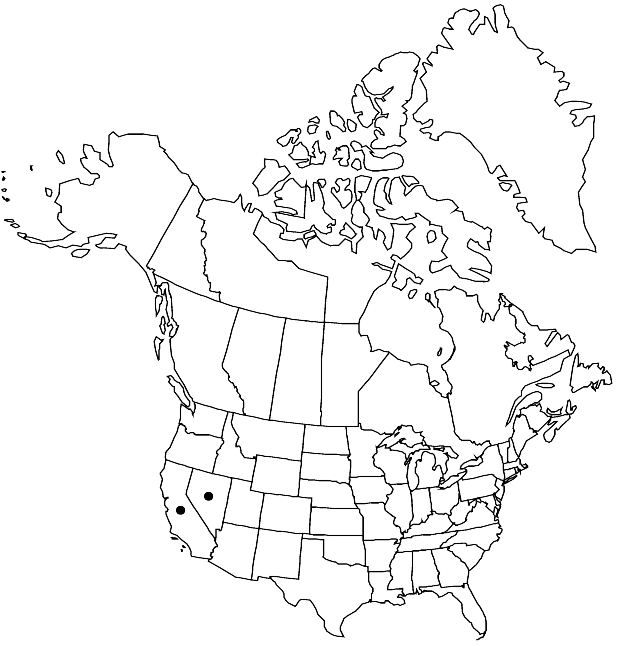Boechera elkoensis
Harvard Pap. Bot. 11: 263. 2007.
Perennials; usually long-lived; apomictic; caudex often woody. Stems 1–5 per caudex branch, arising from center or margin of rosette near ground surface, 1–3 dm, sparsely pubescent proximally, trichomes subsessile, 2–5-rayed, 0.1–0.4 mm, glabrous or sparsely pubescent distally. Basal leaves: blade narrowly oblanceolate, 2–6 mm wide, margins entire, ciliate at petiole base, trichomes (simple), to 0.4 mm, surfaces moderately pubescent, trichomes sessile or subsessile, 2–5-rayed, 0.1–0.4 mm. Cauline leaves: 3–6, not concealing stem; blade auricles absent or 0.2–0.5 mm, surfaces of distalmost leaves glabrous, or sparsely pubescent along margins. Racemes 4–11-flowered, unbranched. Fruiting pedicels erect to ascending, straight, 4–8 mm, usually glabrous, rarely sparsely pubescent, trichomes appressed, branched. Flowers erect to ascending at anthesis; sepals glabrous; petals usually lavender, rarely whitish, 4–7 × 1.2–2 mm, glabrous; pollen spheroid. Fruits erect to ascending, often appressed to rachis, not secund, straight, edges often slightly undulate (not parallel), 3–7 cm × 2–3 mm; valves glabrous; ovules 26–42 per ovary; style 0.05–0.3 mm. Seeds uniseriate, 2.5–3.5 × 1.8–2.5 mm; wing continuous, 0.4–0.9 mm wide.
Phenology: Flowering Jul.
Habitat: Gravelly soil among rocks in open forests and subalpine meadows
Elevation: 2000-3200 m
Distribution

Calif., Nev.
Discussion
Morphological evidence suggests that Boechera elkoensis is an apomictic species that arose through hybridization between B. platysperma and B. stricta (see M. D. Windham and I. A. Al-Shehbaz 2007 for detailed comparison).
Selected References
None.